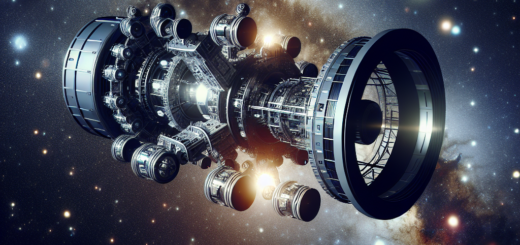From Hubble to James Webb: A Look at the Evolution of Space Telescopes
Since the launch of the Hubble Space Telescope in 1990, space telescopes have played a crucial role in expanding our understanding of the universe. From capturing breathtaking images of distant galaxies to studying the formation of stars and planets, these powerful instruments have revolutionized our knowledge of the cosmos. Now, as we stand on the brink of a new era in space exploration, with the impending launch of the James Webb Space Telescope, it is worth taking a look back at the evolution of space telescopes and the advancements that have led us to this point.
The Hubble Space Telescope, named after the renowned astronomer Edwin Hubble, has been instrumental in shaping our understanding of the universe. Launched into orbit by the Space Shuttle Discovery in 1990, Hubble has provided scientists with unprecedented views of the cosmos. Equipped with a 2.4-meter primary mirror and an array of scientific instruments, Hubble has captured stunning images of distant galaxies, nebulae, and other celestial objects. Its observations have led to groundbreaking discoveries, such as the measurement of the expansion rate of the universe and the detection of supermassive black holes at the centers of galaxies.
Despite its many successes, Hubble is not without its limitations. Its position in low Earth orbit means that it is subject to interference from the Earth’s atmosphere, which can distort its images. In addition, Hubble’s aging hardware has required frequent repairs and upgrades by astronauts during servicing missions. As a result, scientists have long sought a successor to Hubble that could overcome these limitations and push the boundaries of space exploration even further.
Enter the James Webb Space Telescope. Scheduled for launch in late 2021, the James Webb Space Telescope represents the next generation of space telescopes. Named after the former NASA administrator James E. Webb, the telescope is a joint project between NASA, the European Space Agency, and the Canadian Space Agency. With a primary mirror measuring 6.5 meters in diameter, the James Webb Space Telescope is designed to be significantly larger and more powerful than Hubble. Its infrared capabilities will allow it to peer deeper into space and observe objects that are too faint or distant for Hubble to detect.
One of the key features of the James Webb Space Telescope is its ability to operate at a much colder temperature than Hubble. By using a sunshield to block out heat from the Sun, the telescope will be able to cool its instruments to temperatures as low as -233 degrees Celsius (-387 degrees Fahrenheit). This extreme cold will enable the telescope to detect faint infrared signals from the earliest galaxies in the universe, shedding light on the processes that shaped the cosmos in its infancy.
As we look ahead to the launch of the James Webb Space Telescope, it is clear that we are on the cusp of a new era in space exploration. With its advanced technology and unprecedented capabilities, the telescope promises to revolutionize our understanding of the universe and unlock the mysteries of the cosmos. From Hubble to James Webb, the evolution of space telescopes has been a testament to human ingenuity and our insatiable curiosity about the world beyond our own. As we prepare to embark on this new chapter in space exploration, we can only imagine the wonders that lie ahead.













